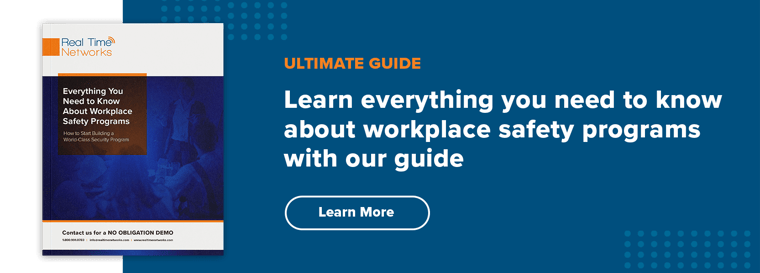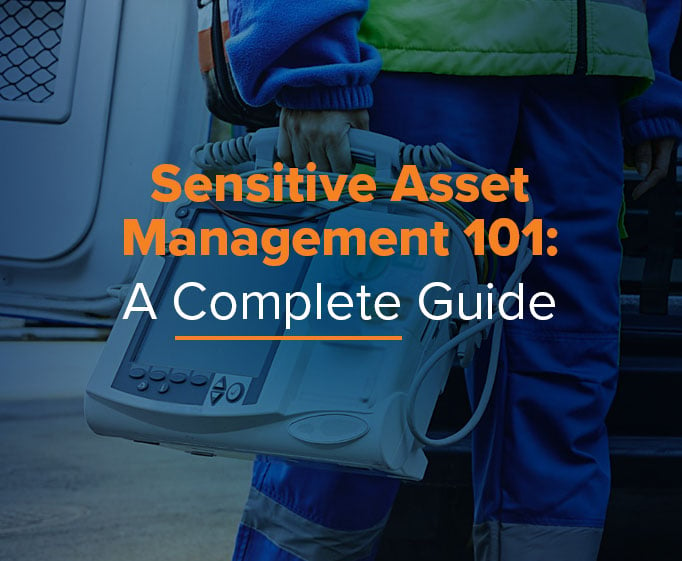You may not be able to predict when emergencies will strike, but you can plan for them. In fact, developing an emergency preparedness plan is one of the most important strategic decisions a business can make. Taking a few simple steps today can save lives in the future and ensure your business's survival.
Many jurisdictions have laws requiring a degree of emergency preparedness in the workplace. But doing the minimum required by law often isn’t enough to ensure a business’s survival in the face of an emergency. In fact, the U.S. Federal Emergency Management Agency (FEMA) found that 40-60 percent of businesses never reopen after their first disaster.
In this article, we’ll cover everything you need to know about emergency preparedness in the workplace. We’ll point you to the legislated requirements in the U.S., Canada, and the U.K., as well as provide you with a comprehensive 7-step checklist you can use to develop your own emergency action plan:
- Assemble the correct stakeholders
- Conduct an emergency threat assessment
- Develop your core EAP procedures
- Outline EAP personnel responsibilities
- Train personnel on your EAP
- Identify procedures that can be automated
- Review your plan annually
What Is a Workplace Emergency?
Let’s start with the fundamentals. According to the U.S. Occupational Safety and Health Administration (OSHA), an emergency in the workplace is defined as any event which “threatens workers, customers, or the public; disrupts or shuts down operations; or causes physical or environmental damage.”
A wide range of events can have those effects. Some are considered technological hazards, because they usually result from failures of human or industrial activity, such as:
- Fires
- Major structural failures
- Chemical spills
- Loss of electrical power
- Crime or terrorism
And then there are natural hazards such as:
- Earthquakes
- Floods
- Tornadoes
- Hurricanes and other severe storms
- Disease outbreaks
It is important to note that these events are just the causes of emergency situations. The damage that results from these hazards are the actual emergencies that need to be planned for.
Federal Emergency Preparedness Regulations
The U.S., Canada, and the U.K. all have government regulations mandating emergency preparedness in the workplace:
- In the U.S., business emergency preparedness is regulated by OSHA.
- In Canada, it is handled by the CCOHS.
- In the U.K., by the HSE.
Although there are differences in each set of regulations, they all are designed to enforce good emergency management. Many of their key goals and requirements are the same. That means following a detailed but flexible checklist can help you develop an emergency action plan (EAP) that works equally well for any of these sets of regulations.
Our Emergency Preparedness Checklist
With all of those potential threats to consider and all of these regulations to follow, developing an emergency action plan (EAP) can be a daunting task. That is why we’ve developed an emergency preparedness checklist that can help entities from small businesses to large enterprises through the process. The checklist breaks down into seven key steps:
1. Assemble the correct stakeholders
To develop an effective EAP, you’re going to need input from a wide range of people. Members of your business leadership and your security staff will need to be involved. You’ll also want representatives from different departments present to provide input on how different responses should take place on the ground.
It may also make sense to seek input from neighboring businesses if your facility is in a tightly packed location, such as an industrial park. Local emergency services may want to contribute as well, especially on emergency plans at larger businesses, which may have an outsized impact on their resources during a wider emergency event.
2. Conduct an emergency threat assessment
With your stakeholders assembled, start brainstorming what hazards your plan needs to address. Consider the key risks facing your facility. Are you in a flood zone? Are you in a high crime area? Are hurricanes or tornadoes a possible threat?
Next, consider what response options are available to your business if one of those threats occurs. Can you evacuate to an offsite location? Is shelter in place an option? Consider all of the responses needed to protect people and property in every one of these situations.
3. Develop Your Core EAP Procedures
Now it’s time to document specific procedures. Emergencies are chaotic so it is important for your EAP to be clear and easy to follow.
First and foremost, your EAP needs to outline how to notify your entire organization that an emergency has occurred so the rest of your EAP can be put into effect. This could mean alerting central security staff to trigger an alarm. Or it might mean issuing a company-wide text message. Your reporting procedure should also specify how to contact emergency services.
Next, document evacuation routes for every floor or department in your facility. These need to be usable by all personnel, including those with disabilities. Fire departments require posted evacuation route signage, so make sure to post signage where it will be effective in your facility.
The last core procedure to consider is mustering. This means collecting personnel at assembly (muster) points outside of your facility where they can be recorded as safe and receive first aid. Set muster points that keep workers at a safe distance from your buildings and away from where first responders will need to work during emergency response.
Depending on the hazards you have identified, you may also want to develop a shelter-in-place procedure. Situations can arise where it’s safest for personnel to avoid risks that are outside, such as severe storms, chemical spills, or certain threats of violence. This procedure can include instructions for sealing a room where staff are sheltering, as well as safe shelter locations away from windows and under desks or tables.
4. Outline EAP personnel responsibilities
Your EAP should assign specific roles and responsibilities that need to be carried out during an emergency. The two main types of roles most organizations assign are emergency managers and essential staff.
Staff assigned to be emergency managers have specific responsibilities when EAPs are in effect. Assign emergency managers to patrol each floor or department and verify that evacuations are complete. Other emergency managers can conduct roll calls at muster points to confirm that personnel have cleared the facility.
Essential staff have special duties once an EAP goes into effect. In some sectors like energy you may need to assign essential staff to shut down dangerous equipment or ensure that other equipment, such as generators, stay operational while evacuations take place.
Staff assigned to these roles will also need to be involved in your training efforts. Depending on the size of your organization or the scope of your EAP, it may make sense to assign specific staff as EAP trainers. This brings us to our next item.
5. Train personnel on your EAP
An EAP is useless if your staff don’t know how to apply it when an emergency strikes. It is essential to conduct emergency preparedness training for your entire workplace once your EAP roles and procedures are set.
Conduct mock evacuation and shelter-in-place drills. Regular staff should follow their area’s evacuation and mustering plans. Emergency managers and essential staff should walk through their own assigned duties.
Make sure to include any specialized training that may be necessary for your business. For example, if hazardous chemicals are present, you may need to conduct additional training on protective clothing use and spill cleanups.
6. Identify procedures that can be automated
Human error is a common problem during emergency responses. Record-keeping and decision-making break down when people are under pressure. Because of this, it can be useful to determine whether specific tasks or whole procedures can be automated.
For example, emergency notification is often automated. You could deploy a public address or text alert system that notifies personnel of an emergency. You might also want to deploy an alert system that automatically contacts emergency services.
Another task that can be automated is employee tracking and roll call at assembly points. Letting an electronic system automatically tag personnel as safe lets your emergency managers focus more effort on first aid and other urgent needs.
7. Review your plan annually
Every business changes and your EAP should change with it. New threats may need to be planned for. New technology may have surfaced that can simplify your planning. Set aside time each year for stakeholders to meet and review what can be improved in your EAP. Then conduct updated training sessions to keep procedures fresh in employees' minds.
Put Your Plan into Practice
You may not be able to predict every emergency, but you can prepare for them. The checklist we’ve provided here should put you well on your way toward developing a detailed and rigorous emergency action plan that prepares your business.
For more detailed information about emergency preparedness in the workplace, check out the regulatory site for your country linked above—or look at the American Red Cross Ready Rating program. FEMA also offers a range of emergency planning resources that are useful for any jurisdiction or industry.
For more information about evacuation planning and automated mustering, take a look at Real Time Networks’ Employee Safety Solutions.

Subscribe to our blog

Jay Palter
Vice President of Marketing & Partnerships




